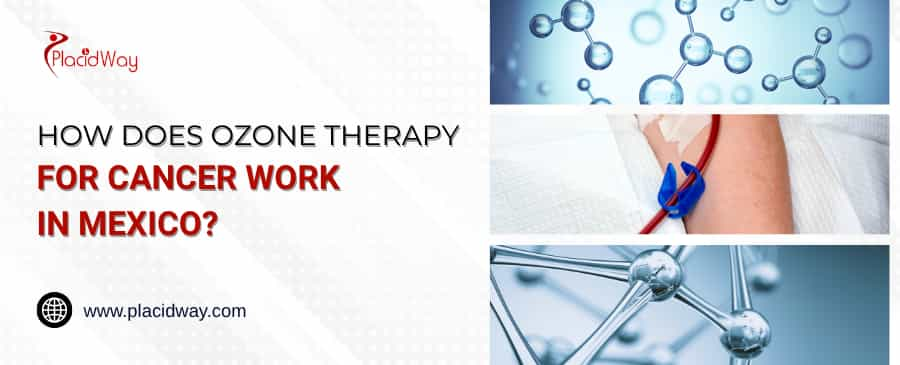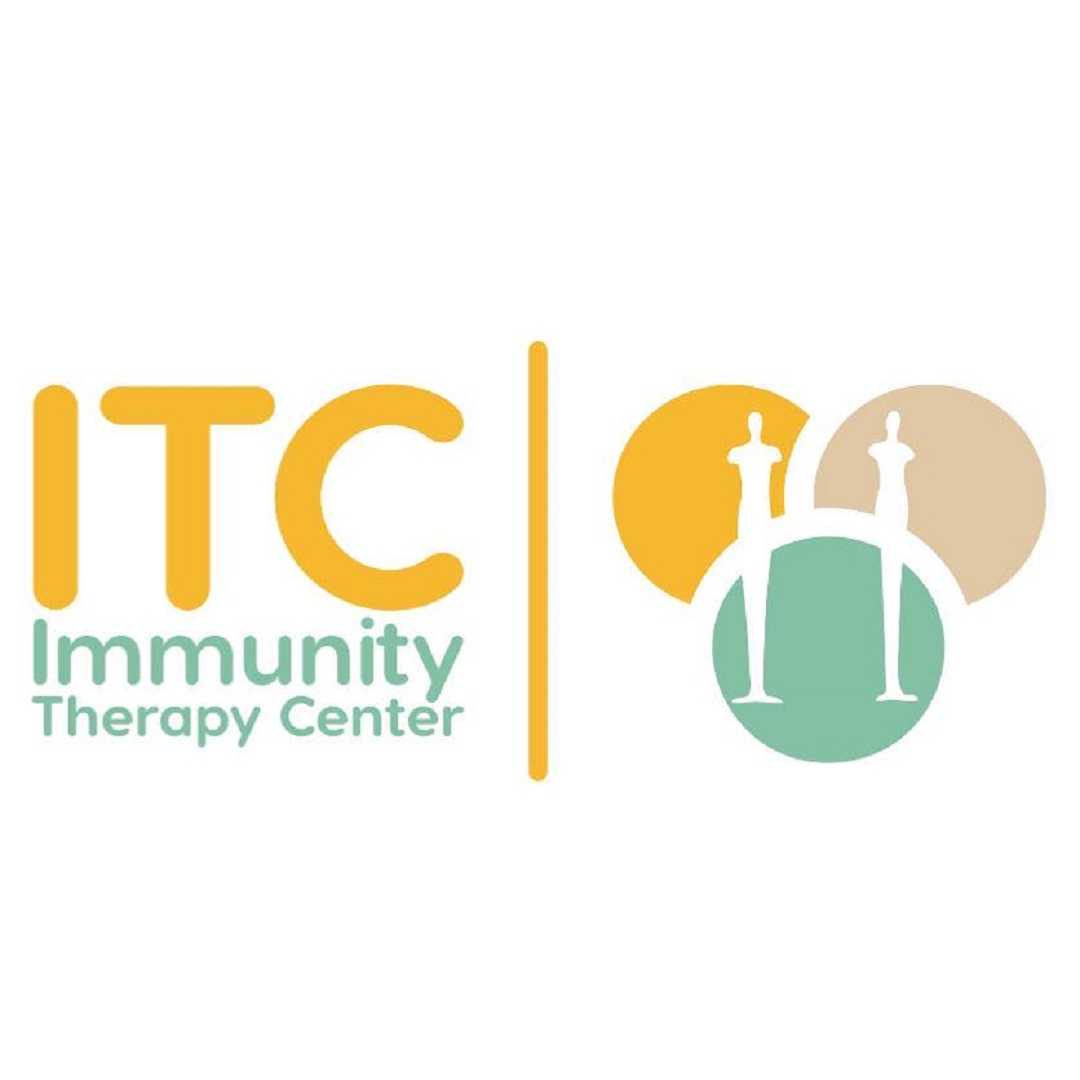Understanding How Ozone Therapy for Cancer Works in Mexico

"Ozone therapy for cancer in Mexico typically involves introducing ozone into the body through various methods, aiming to increase oxygenation, modulate the immune system, and potentially target cancer cells, often as an integrative or alternative approach."
Ozone therapy for cancer has garnered attention as an alternative or complementary treatment, particularly in countries like Mexico where it is more readily available than in some other nations. This therapy involves using medical-grade ozone, a form of oxygen (O3), with the aim of positively influencing the body's systems to fight cancer. While it's important to understand that ozone therapy for cancer is not a universally recognized primary cancer treatment and research is ongoing, many clinics in Mexico offer it as part of an integrative approach. This blog post will explore the various aspects of how ozone therapy for cancer is utilized in Mexico, addressing common questions and providing detailed explanations.
What is Ozone Therapy and How is it Administered for Cancer?
"Ozone therapy involves administering a controlled mixture of oxygen and ozone gas into the body, often through methods like autohemotherapy (mixing with blood), rectal insufflation, or transdermal application in a steam cabinet."
Ozone therapy uses ozone (O3), a highly reactive gas, at specific therapeutic concentrations. The idea is that when introduced into the body, ozone can create a mild, controlled oxidative stress. This stress is believed to trigger a cascade of beneficial biochemical reactions, rather than causing harm, due to the body's own antioxidant defense systems. In the context of cancer, the administration methods in Mexico vary, but some common approaches include:
-
Major Autohemotherapy (MAH): This is one of the most common methods. A patient's blood is drawn, mixed with a precise concentration of ozone and oxygen, and then reinfused back into the bloodstream. This allows the ozonated blood to circulate throughout the body.
-
Rectal Insufflation: Ozone gas is administered directly into the rectum. The mucous membranes of the colon absorb the ozone, which then enters the bloodstream. This method is often chosen as a less invasive alternative to MAH.
-
Transdermal Ozone Therapy: This involves the patient sitting in a steam cabinet while ozone is introduced, allowing it to be absorbed through the skin. The warm steam opens pores, enhancing absorption and promoting detoxification through sweating. This method is sometimes combined with hyperthermia.
-
Ozonated Water/Saline: In some cases, ozone is dissolved in water or saline solution, which can then be administered orally or intravenously.
-
Direct Injection (less common for systemic cancer treatment): While generally avoided for systemic administration due to potential risks, localized ozone injections might be used for specific localized issues, though this is not a primary method for treating widespread cancer.
Each method aims to deliver ozone to the body, where it interacts with biological components to potentially exert its effects.
What is the Theoretical Mechanism of Action of Ozone Therapy Against Cancer Cells?
"The theoretical mechanisms of ozone therapy for cancer suggest it can increase oxygenation to tumor cells, induce a controlled oxidative stress that can be toxic to cancer cells but not healthy cells, modulate the immune system, and reduce inflammation."
The proposed mechanisms by which ozone therapy may act against cancer are multifaceted:
-
Preferential Toxicity to Cancer Cells: Cancer cells often thrive in low-oxygen (hypoxic) environments and have a compromised antioxidant defense system compared to healthy cells. Ozone is an oxidant. Proponents suggest that the controlled oxidative stress induced by ozone therapy can be more damaging to cancer cells, leading to their death (apoptosis), while healthy cells, with their robust antioxidant defenses, can tolerate and even benefit from this mild stress by upregulating their own protective mechanisms.
-
Improved Oxygen Delivery: Cancerous tumors often have poor blood supply and are hypoxic. Ozone is believed to improve oxygen utilization and delivery to tissues, potentially making cancer cells more vulnerable to other treatments (like chemotherapy or radiation) that work better in oxygen-rich environments. By increasing oxygen levels, ozone therapy may disrupt the anaerobic metabolism favored by cancer cells.
-
Immune System Modulation: Ozone therapy is thought to stimulate and modulate the immune system. It may activate immune cells, enhance cytokine production (signaling molecules that regulate immunity), and improve the body's natural defenses against cancer. A stronger immune response can theoretically help the body identify and destroy cancer cells.
-
Anti-inflammatory Effects: Chronic inflammation is often linked to cancer development and progression. Ozone therapy is believed to have anti-inflammatory properties, which could help create a less favorable environment for tumor growth. It may help resolve chronic oxidative stress and reduce inflammatory markers.
-
Neutralization of Toxins: Ozone's oxidizing properties are believed to help neutralize toxins in the body, which proponents suggest can contribute to the development or progression of disease, including cancer.
It's important to note that while these mechanisms are hypothesized, more robust scientific evidence from large-scale clinical trials is needed to fully understand and confirm the efficacy and precise mechanisms of ozone therapy for cancer.
Is Ozone Therapy for Cancer a Standalone Treatment or Part of an Integrative Approach in Mexico?
"In Mexico, ozone therapy for cancer is almost always offered as part of an integrative or complementary cancer treatment protocol, rather than as a standalone cure."
Mexican clinics specializing in alternative or integrative cancer treatments rarely present ozone therapy for cancer as a sole cure. Instead, it's typically integrated into a broader treatment plan that may include a combination of therapies. This holistic approach often incorporates:
-
Nutritional Therapy: Personalized diets, high-dose intravenous vitamin C, and other supplement regimens.
-
Detoxification Protocols: Methods to cleanse the body, such as coffee enemas, colon hydrotherapy, and liver support.
-
Hyperthermia: Local or whole-body heating to make cancer cells more susceptible to treatment.
-
Immunotherapies: Treatments aimed at boosting the body's immune response, which might include specific vaccines or cell therapies.
-
Conventional Treatments: Some integrative clinics may also offer or work in conjunction with conventional treatments like low-dose chemotherapy or targeted radiation, especially if the patient has already undergone these or they are deemed necessary.
The philosophy in many Mexican clinics is to address the patient's overall health and well-being, supporting the body's natural healing processes while directly targeting cancer cells with various modalities. Ozone therapy is seen as a supportive therapy that helps improve the cellular environment and immune function.
What Are the Reported Benefits of Ozone Therapy for Cancer in Mexico?
"Reported benefits of ozone therapy for cancer in Mexico include potential improvements in energy levels, immune function, detoxification, reduction of treatment side effects, and overall quality of life, though direct anti-cancer efficacy is still under investigation."
Patients seeking ozone therapy for cancer in Mexico often report a range of benefits, which clinics emphasize:
-
Improved Energy and Vitality: By enhancing oxygen delivery at the cellular level and potentially activating metabolic pathways, ozone therapy is often claimed to boost energy and reduce cancer-related fatigue.
-
Enhanced Immune Response: A stronger immune system is crucial for fighting cancer. Ozone therapy is believed to stimulate the immune system, making it more effective at identifying and eliminating abnormal cells.
-
Detoxification Support: The oxidizing properties of ozone are thought to aid in the detoxification process, helping the body eliminate waste products and toxins that may accumulate due to cancer or conventional treatments.
-
Reduction of Side Effects from Conventional Treatments: When used as a complementary therapy alongside chemotherapy or radiation, ozone therapy is sometimes reported to help mitigate some of the harsh side effects, such as nausea, fatigue, and immune suppression.
-
Anti-inflammatory Effects: Reducing systemic inflammation can improve overall well-being and potentially slow cancer progression.
-
Better Quality of Life: By addressing symptoms and supporting the body's natural functions, many patients report an improved quality of life during and after their cancer treatment.
It's important for individuals to discuss these potential benefits and manage expectations, as scientific evidence for these claims in the context of cancer treatment is often based on preclinical studies or anecdotal reports, and not yet on large, independent clinical trials.
What are the Potential Side Effects and Risks of Ozone Therapy for Cancer?
"Potential side effects of ozone therapy for cancer are generally mild and temporary, including fatigue, headache, or mild flu-like symptoms; however, improper administration can lead to serious risks such as gas embolism or lung damage if inhaled directly."
While ozone therapy is generally considered safe when administered by trained professionals using medical-grade equipment and precise dosages, potential side effects and risks exist:
-
Mild and Temporary Side Effects: Patients may experience a Herxheimer reaction, characterized by temporary fatigue, headache, or flu-like symptoms. This is sometimes interpreted as a sign of detoxification. Other minor reactions can include localized discomfort at the injection site or mild dizziness.
-
Gas Embolism (Rare but Serious): If ozone gas is directly injected into a vein and not mixed properly with blood (as in autohemotherapy) or if air inadvertently enters the bloodstream, it can cause a gas embolism, which is a very serious and potentially life-threatening complication. This is why proper administration by experienced practitioners is crucial.
-
Lung Irritation (if inhaled): Ozone gas is highly irritating to the respiratory system. Direct inhalation of ozone can cause coughing, shortness of breath, and damage to the lungs. Therefore, inhalation of medical ozone is strictly avoided during therapy.
-
Oxidative Stress Imbalance: While controlled oxidative stress is the goal, an improper dose or frequency could theoretically lead to excessive oxidative stress, which could be harmful.
-
Contraindications: Ozone therapy may not be suitable for everyone. Individuals with conditions like hyperthyroidism, acute alcohol intoxication, severe anemia, or G6PD deficiency may be advised against it.
Patients should always thoroughly discuss their medical history and any concerns with the treating physician before undergoing ozone therapy for cancer.
How Much Does Ozone Therapy for Cancer Cost in Mexico?
"The cost of ozone therapy for cancer in Mexico varies widely depending on the clinic, the specific protocols used, the number of sessions, and whether it's part of a larger integrative treatment package, typically ranging from a few hundred to several thousand US dollars per course or package."
The cost of ozone therapy for cancer in Mexico is not standardized and can differ significantly between clinics. Factors influencing the price include:
-
Clinic Reputation and Location: Well-established clinics with advanced facilities in popular medical tourism destinations may charge more.
-
Type and Number of Sessions: Different administration methods might have different costs, and a full course of treatment often involves multiple sessions over a period of weeks or months.
-
Inclusion in a Package: Often, ozone therapy is part of a comprehensive integrative cancer treatment package that includes other therapies, diagnostic tests, consultations, and sometimes accommodation, which increases the overall cost.
-
Doctor's Expertise: Highly experienced and renowned practitioners may have higher fees.
As a rough estimate, individual ozone therapy sessions might range from a few hundred US dollars. However, when integrated into a full cancer treatment program, the total cost for ozone therapy as part of a package could be several thousand to tens of thousands of dollars, depending on the duration and comprehensiveness of the program. Patients should request a detailed breakdown of costs from clinics they are considering.
What Kind of Clinics in Mexico Offer Ozone Therapy for Cancer?
"In Mexico, ozone therapy for cancer is primarily offered by integrative and alternative medicine clinics that specialize in holistic approaches to cancer care, often alongside a range of other complementary therapies."
Mexico has become a popular destination for medical tourism, particularly for those seeking alternative and integrative cancer treatments. The clinics offering ozone therapy for cancer are typically:
-
Integrative Cancer Centers: These centers focus on combining conventional and alternative therapies, aiming to treat the whole person, not just the disease. They often have a multidisciplinary team including oncologists, nutritionists, naturopaths, and other specialists.
-
Holistic Health Spas/Clinics: Some wellness-focused clinics also offer ozone therapy as part of their broader health optimization and anti-aging programs, which may extend to cancer support.
-
Specialized Alternative Medicine Clinics: These clinics may focus heavily on specific alternative modalities, including various forms of oxidative therapies like ozone.
Many of these clinics are located in border cities like Tijuana, or popular tourist destinations such as Puerto Vallarta and Cancun, making them accessible to international patients. When choosing a clinic, patients should look for transparency regarding treatment protocols, practitioner qualifications, and safety measures.
Is Ozone Therapy for Cancer Approved by Major Health Authorities?
"No, ozone therapy for cancer is not approved by major health authorities like the FDA in the United States or the EMA in Europe as a recognized treatment for cancer, and it is largely considered experimental or unproven by mainstream oncology."
Major health authorities globally, including the U.S. Food and Drug Administration (FDA) and the European Medicines Agency (EMA), do not approve ozone therapy for cancer as a standard or recognized treatment. This means that its efficacy and safety for treating cancer have not been established through rigorous, large-scale clinical trials that meet the standards required for official approval.
The stance of mainstream oncology and regulatory bodies is generally that:
-
Insufficient Evidence: There is a lack of high-quality, peer-reviewed clinical trials demonstrating ozone therapy's effectiveness in curing cancer or significantly prolonging survival. Much of the available evidence comes from preclinical studies (in vitro or animal models) or anecdotal reports.
-
Risk of Misinformation: Promoting unproven treatments as cures can lead patients to forgo or delay conventional, evidence-based treatments that have a proven track record of effectiveness.
-
Safety Concerns: While generally safe when administered correctly for other conditions, the use of ozone, particularly in high doses or through improper methods, carries risks.
In Mexico, the regulatory environment for alternative therapies may be different, allowing clinics to offer ozone therapy for cancer as part of their services. Patients considering this therapy should be aware of its unproven status in mainstream medicine and carefully weigh the potential benefits against the risks and the lack of strong scientific validation.
What Research Exists on Ozone Therapy and Cancer?
"Research on ozone therapy and cancer is primarily limited to preclinical studies (in vitro and animal models) and some small human studies, showing potential mechanisms but lacking large-scale, randomized controlled trials needed to confirm its efficacy in humans."
Current research on ozone therapy and cancer is still in its early stages and mostly consists of:
-
In Vitro Studies: Laboratory studies on cancer cell lines have explored how ozone interacts with cancer cells, investigating its potential to induce apoptosis, inhibit growth, or sensitize cells to chemotherapy.
-
Animal Studies: Some animal models have been used to study the effects of ozone therapy on tumor growth and metastasis, with some showing promising results in specific cancer types.
-
Small Human Studies/Case Reports: There are a limited number of small human studies and case reports published, often from clinics that administer ozone therapy. These can provide anecdotal evidence or preliminary data, but they are typically not robust enough to draw definitive conclusions about efficacy due to small sample sizes, lack of control groups, and potential biases.
-
Focus on Mechanisms: Much of the research aims to understand the biochemical mechanisms by which ozone might exert its effects, such as its interaction with reactive oxygen species, its impact on the immune system, and its influence on cellular metabolism.
The scientific community emphasizes the need for larger, well-designed, randomized controlled clinical trials to definitively determine the role, safety, and effectiveness of ozone therapy for cancer in humans. Without such trials, it remains an experimental treatment from a conventional medical perspective.
Is Ozone Therapy Painful?
"Ozone therapy for cancer is generally not considered painful, though certain administration methods might involve minor discomfort, such as a brief needle prick for intravenous methods or a feeling of fullness for rectal insufflation."
The level of discomfort associated with ozone therapy for cancer largely depends on the method of administration:
-
Major Autohemotherapy (MAH): Patients will feel a needle prick similar to a blood draw when blood is taken, and then another when the ozonated blood is reinfused. This is typically well-tolerated.
-
Rectal Insufflation: This method is generally painless, though some individuals might experience a mild feeling of fullness or gas in the abdomen during or after the procedure.
-
Transdermal Ozone Therapy: Sitting in a steam cabinet is usually relaxing and not painful.
-
Minor Autohemotherapy or Injections: A quick needle prick is felt, similar to any injection.
Overall, most patients find ozone therapy to be a comfortable procedure. Any discomfort is usually minimal and temporary. Clinics often ensure patient comfort throughout the treatment process.
What is the Typical Duration of an Ozone Therapy Treatment Course for Cancer?
"The typical duration of an ozone therapy for cancer course in Mexico varies greatly, often ranging from several weeks to a few months, with sessions performed multiple times per week, depending on the individual's condition and the clinic's protocol."
The duration and frequency of ozone therapy for cancer treatment are highly individualized and determined by the treating physicians at Mexican clinics. There isn't a single standardized protocol for cancer. Factors influencing the duration include:
-
Cancer Type and Stage: More aggressive or advanced cancers might necessitate a longer or more intensive course.
-
Patient's Overall Health: The patient's general health, tolerance to treatment, and response to therapy will guide the treatment plan.
-
Integrative Protocol: If ozone therapy is part of a larger integrative program, the duration will be aligned with the overall treatment length. Some programs may last for 2-3 weeks of intensive daily treatments, followed by maintenance sessions.
-
Clinic's Philosophy: Different clinics may have their own established protocols based on their experience and understanding of ozone therapy.
A common approach might involve several sessions per week for a period of weeks or months, followed by a reassessment of the patient's condition and adjustment of the treatment plan. Patients often travel to Mexico for an initial intensive phase, then return periodically for follow-up or maintenance sessions.
Can Ozone Therapy for Cancer be Combined with Conventional Treatments?
"Some clinics in Mexico offer ozone therapy for cancer as a complementary treatment that can be safely combined with conventional therapies like chemotherapy or radiation, aiming to reduce side effects and potentially enhance their effectiveness."
Many integrative cancer clinics in Mexico operate on the premise that ozone therapy for cancer can be safely and beneficially combined with conventional cancer treatments. The idea is not to replace mainstream therapies but to support the body during what can be very taxing conventional protocols. Proponents suggest that ozone therapy might:
-
Mitigate Side Effects: Help reduce common side effects of chemotherapy and radiation, such as fatigue, nausea, and immune suppression, thereby improving the patient's quality of life during treatment.
-
Enhance Sensitivity: Potentially make cancer cells more susceptible to the effects of chemotherapy or radiation by improving oxygenation or modulating cellular pathways.
-
Support Immune Function: Help maintain or boost the immune system, which can be compromised by conventional treatments, thereby assisting the body in fighting the disease and recovering.
However, it is crucial for patients to ensure that any combined treatment plan is carefully coordinated and monitored by all involved healthcare professionals to avoid potential interactions or adverse effects. Open communication between conventional oncologists and integrative practitioners is ideal, though not always feasible.
What Qualifications Should I Look for in a Clinic Offering Ozone Therapy for Cancer in Mexico?
"When considering a clinic for ozone therapy for cancer in Mexico, look for practitioners with medical degrees, specialized training in ozone therapy and integrative medicine, relevant certifications, and transparent communication regarding their protocols and experience."
Choosing the right clinic is paramount when considering any medical treatment, especially for cancer and unproven therapies. For ozone therapy for cancer in Mexico, patients should look for:
-
Licensed Medical Doctors: Ensure that the physicians administering the ozone therapy are fully licensed medical doctors in Mexico.
-
Specialized Training and Experience: Inquire about their specific training and experience in ozone therapy, particularly in the context of cancer. Certifications from recognized ozone therapy societies can be a good indicator.
-
Integrative Approach: Look for clinics that offer a comprehensive, integrative approach to cancer care, not just ozone therapy in isolation. This suggests a more holistic understanding of patient needs.
-
Transparency and Communication: The clinic should be transparent about their treatment protocols, the scientific basis (or lack thereof, for unproven therapies), potential risks and benefits, and costs. They should be willing to answer all your questions thoroughly.
-
Patient Testimonials and Reviews: While anecdotal, patient testimonials and independent reviews can offer insights into the patient experience and the clinic's reputation. However, these should not be the sole basis for decision-making.
-
Safety Protocols: Ask about their safety protocols for administering ozone, including equipment used and emergency procedures.
-
Clear Informed Consent: The clinic should provide clear informed consent documents that explain the nature of the treatment, its experimental status (if applicable), and potential risks.
Due diligence and careful research are essential when selecting a clinic for ozone therapy for cancer in Mexico.
Are There Any Contraindications for Ozone Therapy?
"Yes, there are contraindications for ozone therapy for cancer, including conditions like acute hemorrhage, severe anemia, G6PD deficiency (favism), hyperthyroidism, pregnancy, and recent heart attack, making a thorough medical evaluation essential."
While generally considered safe when properly administered, ozone therapy does have specific contraindications that need to be carefully evaluated by a qualified medical professional. These include:
-
G6PD Deficiency (Favism): Individuals with this genetic enzyme deficiency are unable to properly process oxidative stress and can experience severe hemolytic anemia (destruction of red blood cells) from ozone. Testing for G6PD deficiency is crucial before ozone therapy.
-
Acute Hemorrhage: Active bleeding is a contraindication as ozone can affect blood clotting.
-
Severe Anemia: Existing severe anemia could be worsened by the oxidative effects of ozone.
-
Hyperthyroidism (Thyrotoxicosis): Ozone may exacerbate the symptoms of an overactive thyroid gland.
-
Recent Myocardial Infarction (Heart Attack): Ozone therapy is generally avoided shortly after a heart attack.
-
Pregnancy: The safety of ozone therapy during pregnancy has not been established, so it is typically avoided.
-
Severe Thrombocytopenia: Very low platelet counts could be a contraindication.
-
Certain Medications: While not always an absolute contraindication, certain medications, especially those affecting blood clotting, might require careful consideration and adjustment.
A comprehensive medical history and physical examination, along with relevant laboratory tests, are essential to identify any contraindications before initiating ozone therapy for cancer.
What is the Difference Between Ozone Therapy and Oxygen Therapy?
"Ozone therapy uses ozone (O3), a highly reactive form of oxygen, to induce specific biochemical reactions in the body, while oxygen therapy involves administering pure oxygen (O2) to increase oxygen levels in the blood and tissues."
While both therapies involve oxygen, their mechanisms and applications are distinct:
-
Ozone Therapy (O3):
-
Composition: Ozone is an allotrope of oxygen, meaning it's made of only oxygen atoms but in a different structural arrangement (three oxygen atoms per molecule, O3).
-
Reactivity: Ozone is highly reactive and unstable. When introduced into the body, it quickly reacts with biological molecules to form ozonides and other signaling molecules. This controlled oxidative stress is believed to trigger beneficial cellular and immune responses.
-
Purpose: The goal is to stimulate various physiological processes, including immune modulation, improved oxygen utilization, and antioxidant system activation, rather than simply increasing oxygen saturation.
-
Administration: Administered in precise, medical-grade concentrations, often mixed with blood (autohemotherapy) or introduced via insufflation.
-
-
Oxygen Therapy (O2):
-
Composition: Standard oxygen that we breathe (two oxygen atoms per molecule, O2).
-
Reactivity: Less reactive than ozone.
-
Purpose: Primarily to increase the oxygen supply to tissues that are hypoxic (low in oxygen), often used for respiratory conditions, carbon monoxide poisoning, or to support critically ill patients.
-
Administration: Typically administered via nasal cannula, oxygen mask, or in a hyperbaric oxygen chamber, where pure oxygen is breathed under increased pressure.
-
In the context of cancer, ozone therapy focuses on the biological signaling properties of ozone, while traditional oxygen therapy primarily aims to address oxygen deficiency.
How Can I Find a Reputable Clinic for Ozone Therapy for Cancer in Mexico?
"To find a reputable clinic for ozone therapy for cancer in Mexico, research accredited clinics, read patient reviews, verify doctor credentials, seek transparent communication about protocols and costs, and consider consulting with a medical tourism facilitator."
Finding a reputable clinic for ozone therapy for cancer in Mexico requires careful investigation:
-
Research Online: Use search engines to look for clinics specializing in integrative or alternative cancer treatments in Mexico. Look for well-designed websites that provide detailed information about their therapies, staff, and facilities.
-
Accreditation and Certifications: While official "accreditation" for alternative therapies may differ from conventional hospitals, look for any affiliations with international medical organizations, quality certifications, or professional bodies in ozone therapy.
-
Doctor Credentials: Verify the qualifications, licenses, and specialized training of the doctors. Many reputable clinics will list their doctors' CVs and certifications.
-
Patient Testimonials and Reviews: Look for patient reviews on independent platforms. While positive testimonials can be encouraging, also pay attention to any recurring negative feedback or concerns.
-
Contact the Clinic Directly: Reach out to the clinics with a list of detailed questions regarding their ozone therapy protocols for cancer, success rates (and how they measure them), costs, typical duration, and what to expect. Pay attention to their responsiveness and willingness to provide clear information.
-
Medical Tourism Facilitators: Consider using a reputable medical tourism facilitator like PlacidWay. These services often have partnerships with vetted clinics, can help with travel arrangements, and provide unbiased information, assisting you in finding clinics that align with your needs and safety expectations.
-
Consult Your Current Doctor: Discuss your interest in ozone therapy for cancer with your current oncologist or primary care physician. While they may not endorse unproven therapies, they can offer advice on your medical condition and potential risks.
Always prioritize safety, transparency, and a clear understanding of the treatment before making any decisions.
What Role Does Detoxification Play Alongside Ozone Therapy for Cancer?
"Detoxification often plays a significant role alongside ozone therapy for cancer in Mexican integrative clinics, as it's believed to remove accumulated toxins that may hinder the body's healing processes and burden the immune system."
In many integrative clinics in Mexico that offer ozone therapy for cancer, detoxification protocols are often a cornerstone of the overall treatment plan. The rationale is that:
-
Reduced Body Burden: Cancer patients often have a high toxic load due to the disease itself, previous conventional treatments (like chemotherapy), poor diet, and environmental exposures. Removing these toxins is believed to reduce the burden on the body's systems, allowing them to function more optimally.
-
Improved Cellular Environment: A less toxic internal environment is thought to create a more favorable setting for healthy cells to thrive and for the immune system to effectively combat cancer.
-
Enhanced Efficacy of Therapies: Some proponents suggest that a detoxified body may respond better to various treatments, including ozone therapy, as the pathways for nutrient absorption and cellular communication are clearer.
-
Support for Organs: Detoxification methods aim to support the liver, kidneys, and lymphatic system, which are crucial for processing and eliminating waste.
Common detoxification methods integrated with ozone therapy may include specific diets, coffee enemas, colon hydrotherapy, infrared saunas, and targeted nutritional supplements that support liver and kidney function. This holistic approach aims to address underlying imbalances that may contribute to disease.
Explore PlacidWay for solutions related to medical tourism, healthcare services, or other relevant offerings to find the best options for your health journey.


.png)














Share this listing